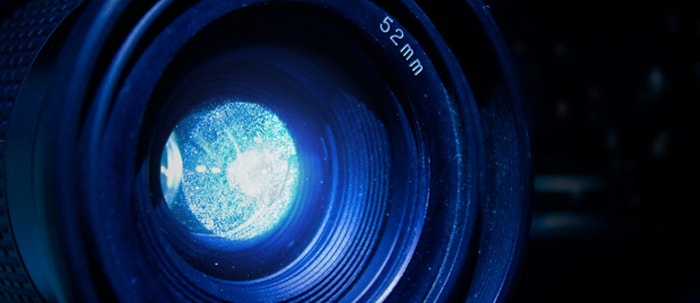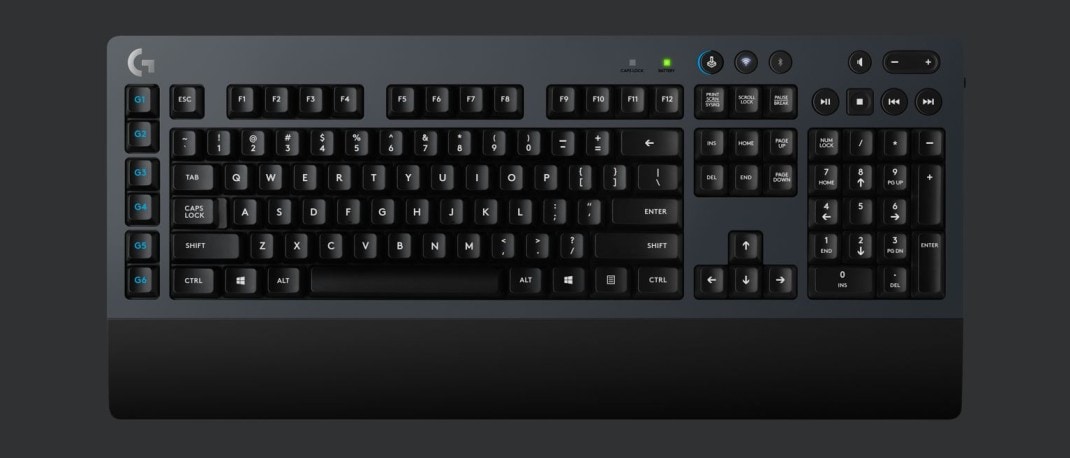Why should you buy a DSLR anyway? Most people will answer this question by saying that DSLRs offer better picture quality than point-and-shoot cameras. This is absolutely true but it’s not the only reason to buy a DSLR. The biggest advantage is to get flexibility in taking photos. DSLRs not only help you in getting good quality photos, but also help you to use the camera the way you want to. Apart from these reasons, DSLRs have tons of other features to offer. So let’s have a look at what they are and what makes a DSLR a better buy than a point-and-shoot.
Superior image quality
We tend to have a wrong perception that the sensor resolution (megapixel) of the camera determines the quality of the image. The image quality of a camera actually depends on the size of the image sensor.

DSLRs have much bigger image sensors, which is why they capture better quality images than point-and-shoot cameras. This is easily visible in the above image. A bigger sensor also reduces the amount of blur and noise from pictures.
Ability to use interchangeable lenses
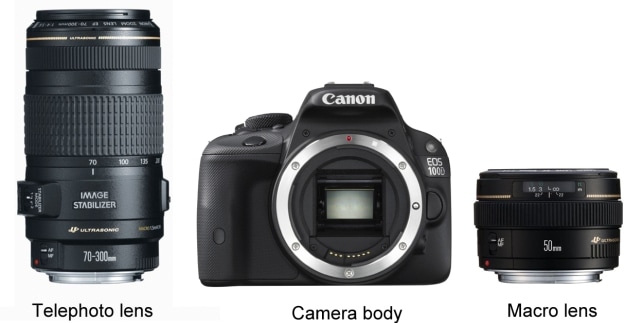
One of the biggest advantages of a DSLR is that you can mount different lenses on it. Each of those lenses is built for a specific type of photography. For example, there are telephoto lenses that let you zoom into distant objects, which can be usually used in wildlife photography. There are even macro lenses that help you to take good close-up photos of small objects, such as a flower or an insect. Similarly, there are also lenses designed for portrait photography and a bunch of other scenarios.
Faster focusing than point-and-shoots
In point-and-shoot cameras, the image sensor does two jobs. One of them is to capture the photo and the other is to focus on the subject. Due to this, the camera takes time in both focusing as well as processing the image which results in shutter lag. In DSLRs, these activities are split between two sensors. The image sensor does the job of capturing the image, while the phase detection sensor does the job of maintaining focus on the subject. Due to this, DSLRs offer faster focusing. So you’re able to click photos one after another really quickly.
Adjustable aperture settings

The quality of a photo depends a lot on the amount of light that reaches the image sensor. One of the ways to control this is by changing the aperture. In point-and-shoot cameras, the aperture is controlled automatically but in DSLRs, it can be controlled manually by the user. The aperture in a camera helps in taking good portrait images. These photos have a nice depth of field, which makes the photos look attractive and professional. By controlling the aperture, you can control the amount of the depth-of-field blur on the objects in the background. This effect is achieved by controlling the amount of light that reaches the sensor.
Adjustable shutter speed
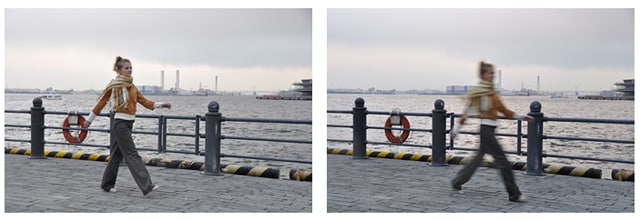
The shutter controls the amount of time the shutter stays open, allowing little or more light to enter the camera. This feature is usually used to take still images of fast moving objects and like aperture, is also controlled automatically in point-and-shoot cameras. DSLRs offer the additional flexibility to alter these settings. As shown in the above image, a faster shutter speed helps taking a still image of the lady walking in the image, while on a slower shutter speed the motion makes her look blurred. (Image credit: Nikon.co.in)
Presence of an optical viewfinder
The viewfinder on the DSLR helps the user to focus accurately on the objects present in the frame. Using a viewfinder also gives more stability while taking photos while there’s no drop in quality while using it.
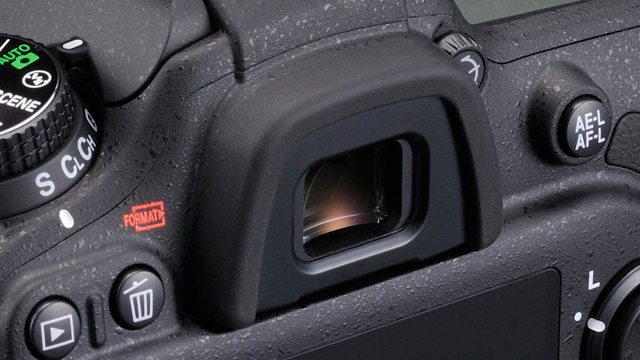
Many high end point- and-shoots sport a digital view finder, which aren’t nearly as good as optical viewfinder and they require power to operate.
Support for high-quality RAW images
Pictures clicked in RAW mode have better quality than JPEG. RAW offers a wider range of colours. It’s preferred by professionals because photos can be edited without affecting the quality. This feature is also offered by some high-end point-and-shoots, but the almost all of the DSLRs have it.
DSLRs are sturdier
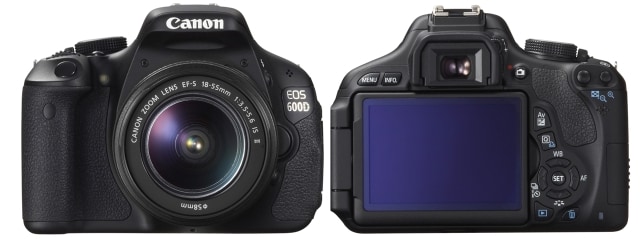
In comparison, DSLRs are studier and have a better build quality than point-and-shoot cameras. They are built for rough use. High-end DSLRs also have a weather coating, which means you don’t have to overly cautious about where you use the DSLR. Most DSLRs also have a rubber coating, which helps in firmly holding the camera. One of the most used components in the camera is the shutter. DSLRs are designed for a lot of usage, so their shutters are rated for anywhere between 10,000 to 50,000 clicks.
Longer battery life
DSLRs generally come with larger batteries than point and shoot. A basic point-and-shoot camera comes with a 700mAh battery whereas a DSLR camera’s battery offers roughly twice that. So you’re very likely to be clicking more photos on a DSLR than a point-and-shoot camera.
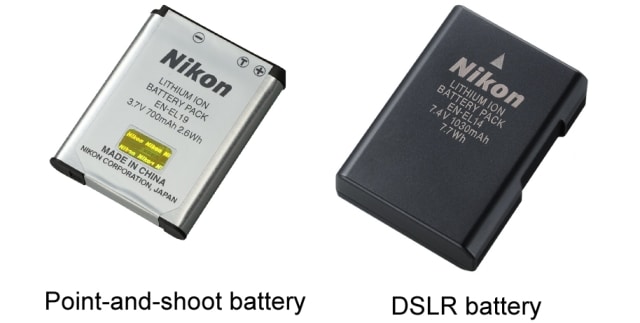
A beginner DSLR is known to take anywhere between 250 to 500 shots on a full charge. However this number might vary, depending on the settings used while taking pictures.
Variety of accessories to choose from
There are a number of accessories that can be used with DSLRs, which help in improving its functionality and performance. An additional flash is an accessory that is more powerful than the inbuilt flash on a DSLR.
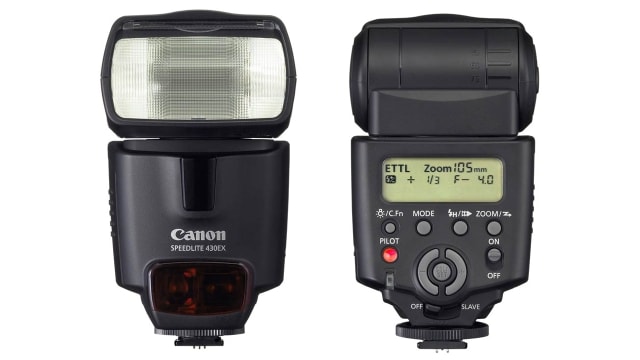
An external remote control is another such accessory can also be used with DSLRs to have access to the camera functions from a distance. These days, smartphones and tablets can also be used as remotes for DSLR.
For video recording purpose, an additional microphone can also be attached to a camera used to record stereo sound. So there you have it – a whole bunch of reasons why you should go in for a DSLR camera. If you’re interested in photography and want to check out some of the models on showcase, drop in at your nearest Reliance Digital store.
